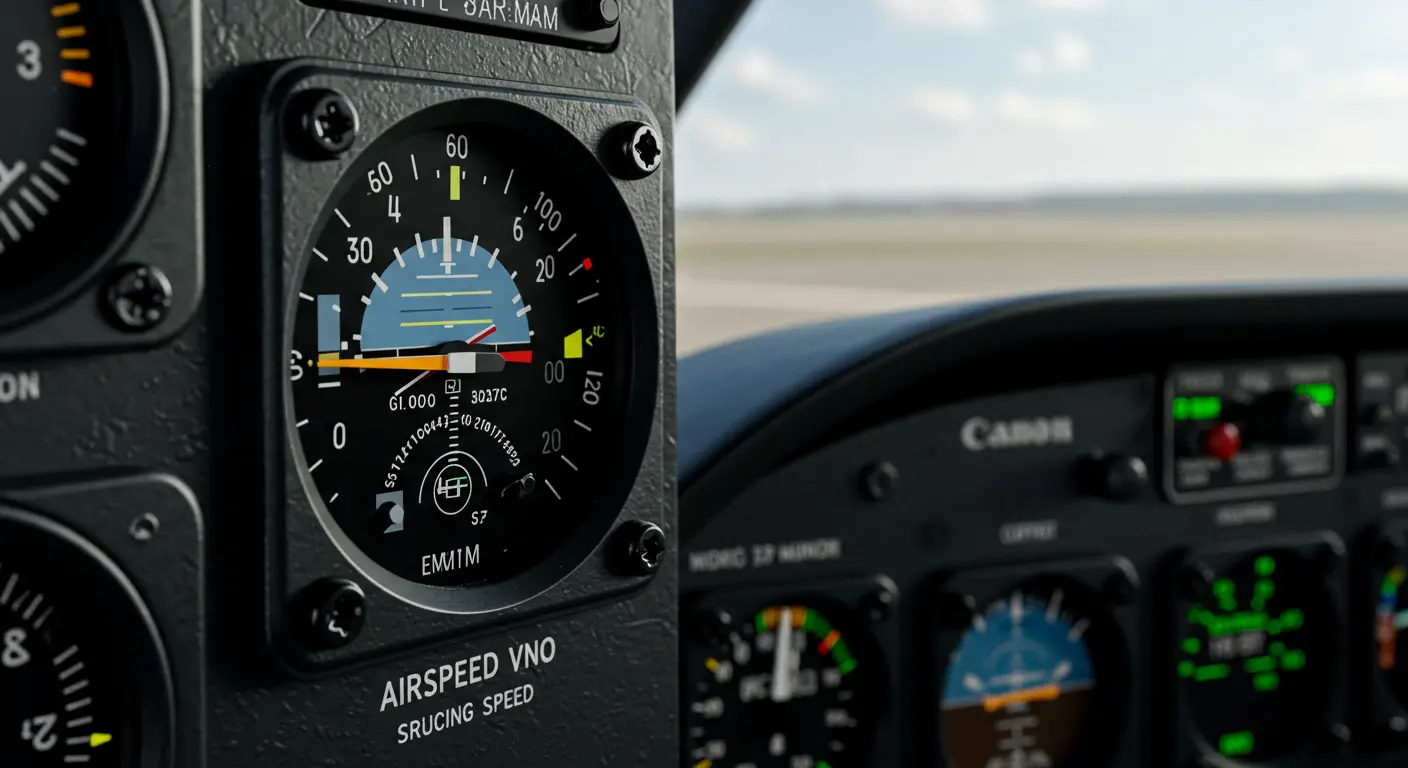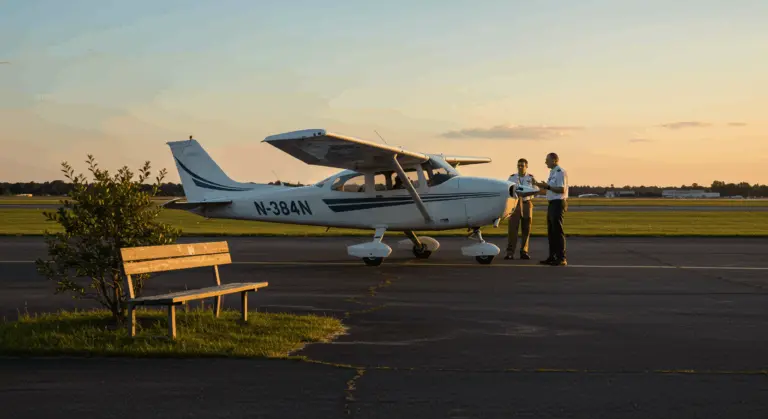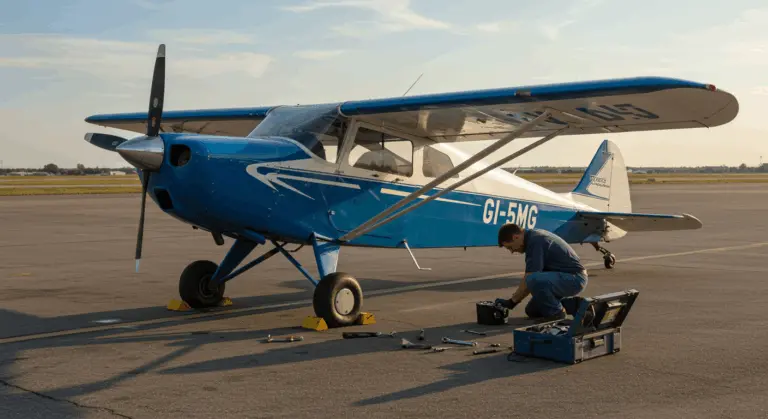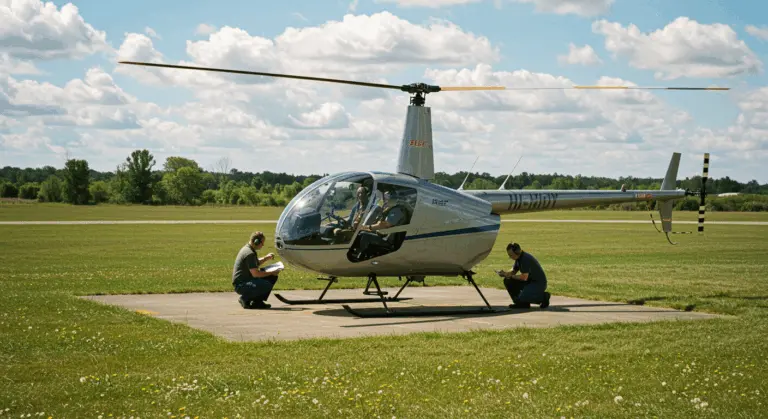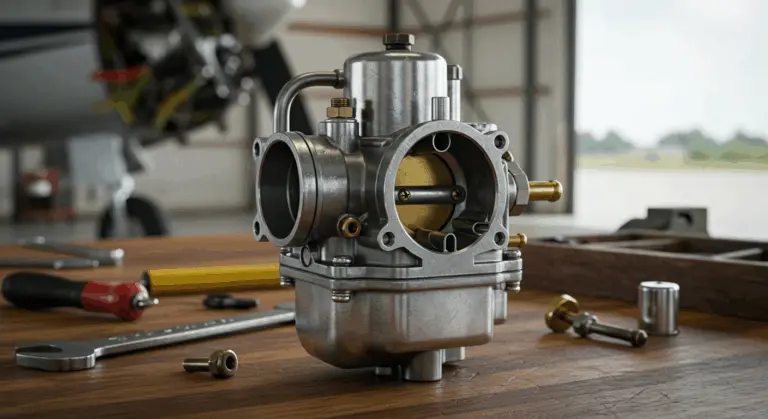Understanding Maximum Structural Cruising Speed (VNO) in Aviation
What is Maximum Structural Cruising Speed (NO)?
Maximum Structural Cruising Speed, or NO, represents the highest velocity at which an aircraft can safely operate in smooth air conditions. This speed appears on your airspeed indicator as the upper boundary of the green arc—where caution begins.
NO defines the maximum speed for normal operations while keeping the aircraft within its limit load factor—essentially, the maximum force it can withstand without permanent structural damage. Most general aviation aircraft handle approximately 3.8G positive and -1.52G negative loads. Transport category aircraft? They’re more conservative, typically rated for 2.5G positive and -1G negative.
Here’s what matters: while you can technically fly above NO in smooth air, you’re walking a tightrope. Unexpected turbulence at these speeds could instantly push your aircraft beyond its structural design limits. The result? Potential airframe damage that was entirely preventable.
Why NO Speed Matters for Pilots
Understanding NO isn’t just academic—it’s essential for safe flying and operational efficiency. Yet it’s rarely your optimal cruising speed.
Flying near NO comes with trade-offs. Yes, you’ll burn more fuel and generate more noise, but you’ll also shave time off your journey and potentially improve engine cooling. It’s particularly valuable during rapid descents or medical emergencies when every minute counts.
Pilots must consider several variables when choosing a cruise speed:
-
Fuel efficiency requirements
-
Time constraints
-
Altitude and aircraft weight
-
Prevailing winds and outside air temperature
-
Potential turbulence
-
Noise considerations
Experienced pilots manage this balance through careful attention: monitoring airspeed and conditions, using smooth control inputs, and staying ready to reduce speed when rough air threatens. It’s about operating within NO’s structural boundaries while maximizing performance.
Determining NO: How is it Established?
NO comes from meticulous engineering analysis and exhaustive flight testing during aircraft certification. Every number has been earned through rigorous evaluation.
This certification process adheres to stringent regulatory standards from authorities like the FAA or EASA. These organizations mandate the minimum standards that must be met before any aircraft receives airworthiness certification, including the precise determination of critical airspeeds like NO.
By combining test data with computer modeling, manufacturers establish a NO that balances safety margins with performance capabilities.
Flying at NO: Best Practices and Considerations
Pilots operating near NO should adhere to these best practices:
-
Fly in Smooth Air Only: NO assumes the absence of significant turbulence or gusts.
-
Monitor Instruments: Continuously watch the airspeed indicator and outside air temperature, as temperature affects true airspeed.
-
Use Smooth Control Inputs: Make gentle, progressive control movements to avoid generating excessive g-forces that could overstress the airframe.
-
Anticipate Turbulence: Maintain situational awareness of weather and be prepared to reduce speed immediately if turbulence is encountered or expected.
-
Respect Aircraft Condition: Operate at lower speeds if the aircraft has known maintenance issues or previous damage that could compromise its structural integrity.
Consequences of Exceeding NO
Pushing beyond NO creates serious risks to both structural integrity and flight safety. While exceeding this speed doesn’t guarantee immediate failure, it reduces the safety margin engineers built into your aircraft—especially when turbulence enters the equation.
When an aircraft exceeds NO and encounters atmospheric disturbances, those gusts can suddenly spike the angle of attack and lift coefficient. The result? Forces that potentially exceed the aircraft’s limit load factor, leading to anything from minor skin buckling to severe wing deformation—or worse, structural failure.
Operating in the yellow caution range above NO means your aircraft becomes vulnerable to conditions that would normally be routine. Moderate turbulence that’s routine below NO becomes hazardous when you’re already near structural limits. Control inputs that are perfectly safe at lower speeds might generate dangerous loads above NO.
There are also regulatory and insurance implications. Knowingly operating above NO may affect pilot liability in incidents, potentially impacting insurance coverage or triggering regulatory action—particularly if damage or accidents result.
| Feature | NO (Maximum Structural Cruising Speed) | VNE (Never Exceed Speed) |
|—|—|—|
| Definition | The maximum speed for normal operations in smooth air. | The absolute maximum speed the aircraft must not exceed under any circumstances. |
| Indicator | Top of the green arc, beginning of the yellow (caution) arc. | A red line at the top of the yellow arc. |
| Purpose | An operational guideline for cruising that maintains a safety margin against gusts. | A hard structural limit to prevent catastrophic failure like flutter or disintegration. |
| Exceeding It | Increases risk, especially in turbulence. Requires caution. | Poses immediate danger of catastrophic structural failure, regardless of air conditions. |
The Role of NO in Aircraft Maintenance and Certification
NO plays an important role in both initial aircraft certification and ongoing maintenance protocols.
From a maintenance standpoint, NO provides an important reference point. Suspect your aircraft exceeded NO, especially in turbulence? Special inspections may be mandatory to detect potential structural damage.
Maintenance programs typically include specific structural inspection requirements based on the assumption that aircraft operate within design limitations—including NO. Consistently exceeding this speed can accelerate structural fatigue, demanding more frequent or comprehensive inspections of critical components.
For older aircraft or those with modifications, VN Ore-evaluation becomes essential for continued airworthiness. Changes in weight, balance, or aerodynamic characteristics can alter safe operating speeds, potentially requiring adjustments to operational limitations. This ongoing assessment ensures that safety standards established during initial certification remain valid throughout the aircraft’s operational lifetime.

